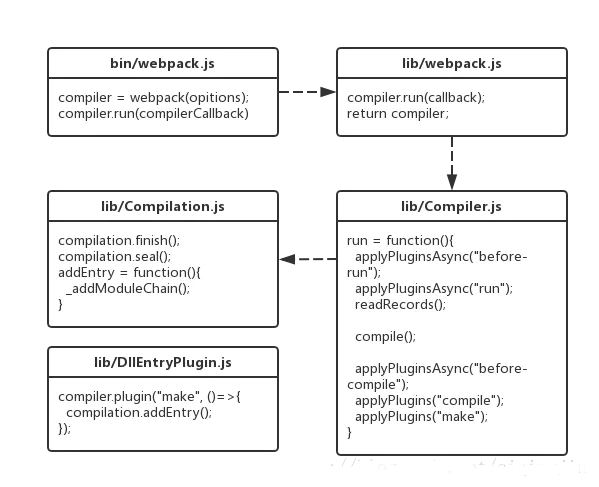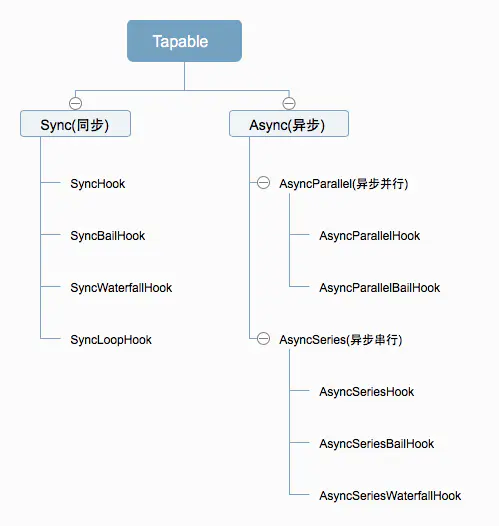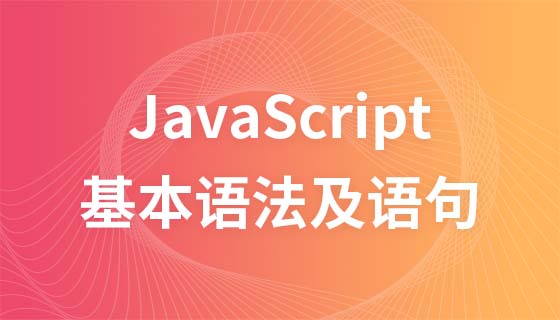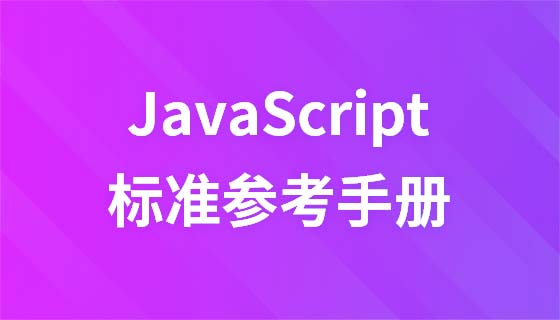
webpack是目前最受歡迎的打包工具之一,其配置簡單,功能強大,擁有豐富的載入器和插件系統,為前端開發者提供了許多便利。筆者預設各位看官在閱讀本章之前已經有了一定的使用經驗,所以對webpack的使用方式不做贅述。
閱讀本章,你可以了解以下內容:
Webpack打包後程式碼結構
##簡單打包我們先寫一個最簡單的方法,然後用webpack進行打包:
// /webpack/bundles/simple/moduleA.js
window.printA = function printA() {
console.log(`This is module A!`);
}// /webpack/bundles/simple/webpack.config.js
const path = require('path');
const webpack = require('webpack');
const HtmlWebpackPlugin = require('html-webpack-plugin');
module.exports = {
entry: {
main: './moduleA.js'
},
output: {
path: path.resolve(__dirname, 'dist'),
filename: 'simple.bundle.js'
},
plugins: [
new HtmlWebpackPlugin({
template: './index.html'
})
]
}nbsp;html> <meta> <meta> <meta> <title>Webpack - Simple Bundle</title>
webpack 後我們得到了一個dist 目錄,我們開啟simple.bundle.js 檔案:
/******/ (function(modules) { // webpackBootstrap
/******/ // The module cache
/******/ var installedModules = {};
/******/
/******/ // The require function
/******/ function __webpack_require__(moduleId) {
/******/
/******/ // Check if module is in cache
/******/ if(installedModules[moduleId]) {
/******/ return installedModules[moduleId].exports;
/******/ }
/******/ // Create a new module (and put it into the cache)
/******/ var module = installedModules[moduleId] = {
/******/ i: moduleId,
/******/ l: false,
/******/ exports: {}
/******/ };
/******/
/******/ // Execute the module function
/******/ modules[moduleId].call(module.exports, module, module.exports, __webpack_require__);
/******/
/******/ // Flag the module as loaded
/******/ module.l = true;
/******/
/******/ // Return the exports of the module
/******/ return module.exports;
/******/ }
/******/
/******/
/******/ // expose the modules object (__webpack_modules__)
/******/ __webpack_require__.m = modules;
/******/
/******/ // expose the module cache
/******/ __webpack_require__.c = installedModules;
/******/
/******/ // define getter function for harmony exports
/******/ __webpack_require__.d = function(exports, name, getter) {
/******/ if(!__webpack_require__.o(exports, name)) {
/******/ Object.defineProperty(exports, name, {
/******/ configurable: false,
/******/ enumerable: true,
/******/ get: getter
/******/ });
/******/ }
/******/ };
/******/
/******/ // getDefaultExport function for compatibility with non-harmony modules
/******/ __webpack_require__.n = function(module) {
/******/ var getter = module && module.__esModule ?
/******/ function getDefault() { return module['default']; } :
/******/ function getModuleExports() { return module; };
/******/ __webpack_require__.d(getter, 'a', getter);
/******/ return getter;
/******/ };
/******/
/******/ // Object.prototype.hasOwnProperty.call
/******/ __webpack_require__.o = function(object, property) { return Object.prototype.hasOwnProperty.call(object, property); };
/******/
/******/ // __webpack_public_path__
/******/ __webpack_require__.p = "";
/******/
/******/ // Load entry module and return exports
/******/ return __webpack_require__(__webpack_require__.s = 0);
/******/ })
/************************************************************************/
/******/ ([
/* 0 */
/***/ (function(module, exports) {
window.printA = function printA() {
console.log(`This is module A!`);
}
/***/ })
/******/ ]);// ......
var installedModules = {};
/******/
/******/ // The require function
/******/ function __webpack_require__(moduleId) {
/******/
/******/ // Check if module is in cache
/******/ if(installedModules[moduleId]) {
/******/ return installedModules[moduleId].exports;
/******/ }
/******/ // Create a new module (and put it into the cache)
/******/ var module = installedModules[moduleId] = {
/******/ i: moduleId,
/******/ l: false,
/******/ exports: {}
/******/ };
/******/
/******/ // Execute the module function
/******/ modules[moduleId].call(module.exports, module, module.exports, __webpack_require__);
/******/
/******/ // Flag the module as loaded
/******/ module.l = true;
/******/
/******/ // Return the exports of the module
/******/ return module.exports;
/******/ }
/******/
/******/
/******/ // expose the modules object (__webpack_modules__)
/******/ __webpack_require__.m = modules;
/******/
/******/ // expose the module cache
/******/ __webpack_require__.c = installedModules;
/******/
/******/ // define getter function for harmony exports
/******/ __webpack_require__.d = function(exports, name, getter) {
/******/ if(!__webpack_require__.o(exports, name)) {
/******/ Object.defineProperty(exports, name, {
/******/ configurable: false,
/******/ enumerable: true,
/******/ get: getter
/******/ });
/******/ }
/******/ };
/******/
/******/ // getDefaultExport function for compatibility with non-harmony modules
/******/ __webpack_require__.n = function(module) {
/******/ var getter = module && module.__esModule ?
/******/ function getDefault() { return module['default']; } :
/******/ function getModuleExports() { return module; };
/******/ __webpack_require__.d(getter, 'a', getter);
/******/ return getter;
/******/ };
/******/
/******/ // Object.prototype.hasOwnProperty.call
/******/ __webpack_require__.o = function(object, property) { return Object.prototype.hasOwnProperty.call(object, property); };
/******/
/******/ // __webpack_public_path__
/******/ __webpack_require__.p = "";
/******/
/******/ // Load entry module and return exports
/******/ return __webpack_require__(__webpack_require__.s = 0);
// ......webpack_require 的方法,這個方法的實質很簡單:

多模組間存在簡單依賴#例如moduleB.js 依賴moduleA.js 檔案。
// /webpack/bundles/simpleDependencies/moduleA.js
module.exports = window.printA = function printA() {
console.log(`This is module A!`);
}// /webpack/bundles/simpleDependencies/moduleB.js
const printA = require('./moduleA');
module.exports = window.printB = function printB() {
printA();
console.log('This is module B!');
}// /webpack/bundles/simpleDependencies/webpack.config.js // ... main: './moduleB.js' // ...
// /webpack/bundles/simpleDependencies/dist/bundle.js
/******/ (function(modules) { // webpackBootstrap
/******/ // The module cache
/******/ var installedModules = {};
/******/
/******/ // The require function
/******/ function __webpack_require__(moduleId) {
/******/
/******/ // Check if module is in cache
/******/ if(installedModules[moduleId]) {
/******/ return installedModules[moduleId].exports;
/******/ }
/******/ // Create a new module (and put it into the cache)
/******/ var module = installedModules[moduleId] = {
/******/ i: moduleId,
/******/ l: false,
/******/ exports: {}
/******/ };
/******/
/******/ // Execute the module function
/******/ modules[moduleId].call(module.exports, module, module.exports, __webpack_require__);
/******/
/******/ // Flag the module as loaded
/******/ module.l = true;
/******/
/******/ // Return the exports of the module
/******/ return module.exports;
/******/ }
/******/
/******/
/******/ // expose the modules object (__webpack_modules__)
/******/ __webpack_require__.m = modules;
/******/
/******/ // expose the module cache
/******/ __webpack_require__.c = installedModules;
/******/
/******/ // define getter function for harmony exports
/******/ __webpack_require__.d = function(exports, name, getter) {
/******/ if(!__webpack_require__.o(exports, name)) {
/******/ Object.defineProperty(exports, name, {
/******/ configurable: false,
/******/ enumerable: true,
/******/ get: getter
/******/ });
/******/ }
/******/ };
/******/
/******/ // getDefaultExport function for compatibility with non-harmony modules
/******/ __webpack_require__.n = function(module) {
/******/ var getter = module && module.__esModule ?
/******/ function getDefault() { return module['default']; } :
/******/ function getModuleExports() { return module; };
/******/ __webpack_require__.d(getter, 'a', getter);
/******/ return getter;
/******/ };
/******/
/******/ // Object.prototype.hasOwnProperty.call
/******/ __webpack_require__.o = function(object, property) { return Object.prototype.hasOwnProperty.call(object, property); };
/******/
/******/ // __webpack_public_path__
/******/ __webpack_require__.p = "";
/******/
/******/ // Load entry module and return exports
/******/ return __webpack_require__(__webpack_require__.s = 0);
/******/ })
/************************************************************************/
/******/ ([
/* 0 */
/***/ (function(module, exports, __webpack_require__) {
const printA = __webpack_require__(1);
module.exports = window.printB = function printB() {
printA();
console.log('This is module B!');
}
/***/ }),
/* 1 */
/***/ (function(module, exports) {
module.exports = window.printA = function printA() {
console.log(`This is module A!`);
}
/***/ })
/******/ ]);/* 0 */
/***/ (function(module, exports, __webpack_require__) {
const printA = __webpack_require__(1);
module.exports = window.printB = function printB() {
printA();
console.log('This is module B!');
}多重入口需要注意,打包的檔案中moudleId是不會重複的,如果有兩個入口檔案的情況,則入口模組id都為0,其他依賴模組id不重複。我們建立以下幾個文件,其中 index0.js 依賴 common.js 與 dependency.js ,而 index1.js 依賴 index0.js 和 common.js 兩個檔案。
// /webpack/bundles/multi/common.js
module.exports = function() {
console.log('This is common module!');
}// /webpack/bundles/multi/dependency .js
module.exports = function() {
console.log('This is dependency module!');
}// /webpack/bundles/multi/index0.js
const common = require('./common');
const dependency = require('./dependency');
module.exports = window.print0 = function() {
common();
dependency();
console.log('This is module 0!');
}// /webpack/bundles/multi/index1.js
const common = require('./common');
const index0 = require('./index0');
module.exports = window.print1 = function() {
common();
console.log('This is module 1!');
}// /webpack/bundles/multi/webpack.config.js
// ...
entry: {
index0: './index0.js',
index1: './index1.js'
},
output: {
path: path.resolve(__dirname, 'dist'),
filename: '[name].bundle.js'
},
// ...// /webpack/bundles/multi/dist/index0.bundle.js
/******/ (function(modules) { // webpackBootstrap
/******/ // The module cache
/******/ var installedModules = {};
/******/
/******/ // The require function
/******/ function __webpack_require__(moduleId) {
/******/
/******/ // Check if module is in cache
/******/ if(installedModules[moduleId]) {
/******/ return installedModules[moduleId].exports;
/******/ }
/******/ // Create a new module (and put it into the cache)
/******/ var module = installedModules[moduleId] = {
/******/ i: moduleId,
/******/ l: false,
/******/ exports: {}
/******/ };
/******/
/******/ // Execute the module function
/******/ modules[moduleId].call(module.exports, module, module.exports, __webpack_require__);
/******/
/******/ // Flag the module as loaded
/******/ module.l = true;
/******/
/******/ // Return the exports of the module
/******/ return module.exports;
/******/ }
/******/
/******/
/******/ // expose the modules object (__webpack_modules__)
/******/ __webpack_require__.m = modules;
/******/
/******/ // expose the module cache
/******/ __webpack_require__.c = installedModules;
/******/
/******/ // define getter function for harmony exports
/******/ __webpack_require__.d = function(exports, name, getter) {
/******/ if(!__webpack_require__.o(exports, name)) {
/******/ Object.defineProperty(exports, name, {
/******/ configurable: false,
/******/ enumerable: true,
/******/ get: getter
/******/ });
/******/ }
/******/ };
/******/
/******/ // getDefaultExport function for compatibility with non-harmony modules
/******/ __webpack_require__.n = function(module) {
/******/ var getter = module && module.__esModule ?
/******/ function getDefault() { return module['default']; } :
/******/ function getModuleExports() { return module; };
/******/ __webpack_require__.d(getter, 'a', getter);
/******/ return getter;
/******/ };
/******/
/******/ // Object.prototype.hasOwnProperty.call
/******/ __webpack_require__.o = function(object, property) { return Object.prototype.hasOwnProperty.call(object, property); };
/******/
/******/ // __webpack_public_path__
/******/ __webpack_require__.p = "";
/******/
/******/ // Load entry module and return exports
/******/ return __webpack_require__(__webpack_require__.s = 1);
/******/ })
/************************************************************************/
/******/ ([
/* 0 */
/***/ (function(module, exports) {
module.exports = function() {
console.log('This is common module!');
}
/***/ }),
/* 1 */
/***/ (function(module, exports, __webpack_require__) {
const common = __webpack_require__(0);
const dependency = __webpack_require__(2);
module.exports = window.print0 = function() {
common();
dependency();
console.log('This is module 0!');
}
/***/ }),
/* 2 */
/***/ (function(module, exports) {
module.exports = function() {
console.log('This is dependency module!');
}
/***/ })
/******/ ]);// /webpack/bundles/multi/dist/index1.bundle.js
/******/ (function(modules) { // webpackBootstrap
/******/ // The module cache
/******/ var installedModules = {};
/******/
/******/ // The require function
/******/ function __webpack_require__(moduleId) {
/******/
/******/ // Check if module is in cache
/******/ if(installedModules[moduleId]) {
/******/ return installedModules[moduleId].exports;
/******/ }
/******/ // Create a new module (and put it into the cache)
/******/ var module = installedModules[moduleId] = {
/******/ i: moduleId,
/******/ l: false,
/******/ exports: {}
/******/ };
/******/
/******/ // Execute the module function
/******/ modules[moduleId].call(module.exports, module, module.exports, __webpack_require__);
/******/
/******/ // Flag the module as loaded
/******/ module.l = true;
/******/
/******/ // Return the exports of the module
/******/ return module.exports;
/******/ }
/******/
/******/
/******/ // expose the modules object (__webpack_modules__)
/******/ __webpack_require__.m = modules;
/******/
/******/ // expose the module cache
/******/ __webpack_require__.c = installedModules;
/******/
/******/ // define getter function for harmony exports
/******/ __webpack_require__.d = function(exports, name, getter) {
/******/ if(!__webpack_require__.o(exports, name)) {
/******/ Object.defineProperty(exports, name, {
/******/ configurable: false,
/******/ enumerable: true,
/******/ get: getter
/******/ });
/******/ }
/******/ };
/******/
/******/ // getDefaultExport function for compatibility with non-harmony modules
/******/ __webpack_require__.n = function(module) {
/******/ var getter = module && module.__esModule ?
/******/ function getDefault() { return module['default']; } :
/******/ function getModuleExports() { return module; };
/******/ __webpack_require__.d(getter, 'a', getter);
/******/ return getter;
/******/ };
/******/
/******/ // Object.prototype.hasOwnProperty.call
/******/ __webpack_require__.o = function(object, property) { return Object.prototype.hasOwnProperty.call(object, property); };
/******/
/******/ // __webpack_public_path__
/******/ __webpack_require__.p = "";
/******/
/******/ // Load entry module and return exports
/******/ return __webpack_require__(__webpack_require__.s = 3);
/******/ })
/************************************************************************/
/******/ ([
/* 0 */
/***/ (function(module, exports) {
module.exports = function() {
console.log('This is common module!');
}
/***/ }),
/* 1 */
/***/ (function(module, exports, __webpack_require__) {
const common = __webpack_require__(0);
const dependency = __webpack_require__(2);
module.exports = window.print0 = function() {
common();
dependency();
console.log('This is module 0!');
}
/***/ }),
/* 2 */
/***/ (function(module, exports) {
module.exports = function() {
console.log('This is dependency module!');
}
/***/ }),
/* 3 */
/***/ (function(module, exports, __webpack_require__) {
const common = __webpack_require__(0);
const index0 = __webpack_require__(1);
module.exports = window.print1 = function() {
common();
console.log('This is module 1!');
}
/***/ })
/******/ ]);我們看看如果加入了CommonsChunkPlugin 這個外掛程式後的情況(修改webpack.config.js):
// /webpack/bundles/CommonsChunkPlugin/webpack.config.js
plugins: [
// ...
new webpack.optimize.CommonsChunkPlugin({
name: 'common',
filename: 'common.js'
})
]// /webpack/bundles/CommonsChunkPlugin/dist/common.js
/******/ (function(modules) { // webpackBootstrap
/******/ // install a JSONP callback for chunk loading
/******/ var parentJsonpFunction = window["webpackJsonp"];
/******/ window["webpackJsonp"] = function webpackJsonpCallback(chunkIds, moreModules, executeModules) {
/******/ // add "moreModules" to the modules object,
/******/ // then flag all "chunkIds" as loaded and fire callback
/******/ var moduleId, chunkId, i = 0, resolves = [], result;
/******/ for(;i common.js 已經包含了所有的公共方法,並且在瀏覽器window 物件中建立了一個名為webpackJsonp 的方法。 <p></p><pre class="brush:php;toolbar:false">// /webpack/bundles/CommonsChunkPlugin/dist/common.js
// ...
/******/ var parentJsonpFunction = window["webpackJsonp"];
/******/ window["webpackJsonp"] = function webpackJsonpCallback(chunkIds, moreModules, executeModules) {
/******/ // add "moreModules" to the modules object,
/******/ // then flag all "chunkIds" as loaded and fire callback
/******/ var moduleId, chunkId, i = 0, resolves = [], result;
/******/ for(;i 這個方法與 __webpack_require__ 較為類似,同樣也是將模組快取進來。只不過 webpack 會預先抽取公共模組,先將其快取進來,而後可以在其他的 bundle.js 中使用 webpackJsonp 方法進行模組載入。 <p></p><pre class="brush:php;toolbar:false">// /webpack/bundles/CommonsChunkPlugin/dist/index0.bundle.js
webpackJsonp([1],[],[1]);// /webpack/bundles/CommonsChunkPlugin/dist/index1.bundle.js
webpackJsonp([0],{
/***/ 3:
/***/ (function(module, exports, __webpack_require__) {
const common = __webpack_require__(0);
const index0 = __webpack_require__(1);
module.exports = window.print1 = function() {
common();
console.log('This is module 1!');
}
/***/ })
},[3]);Webpack核心架構- Tapable
#從github將webpack原始碼複製至本地,我們可以先了解到webpack 的一個整體流程:

lib/webpack.js 這個文件,此文件為 webpack 的入口文件。
const webpack = (options, callback) => {
const webpackOptionsValidationErrors = validateSchema(
webpackOptionsSchema,
options
);
if (webpackOptionsValidationErrors.length) {
throw new WebpackOptionsValidationError(webpackOptionsValidationErrors);
}
let compiler;
if (Array.isArray(options)) {
compiler = new MultiCompiler(options.map(options => webpack(options)));
} else if (typeof options === "object") {
options = new WebpackOptionsDefaulter().process(options);
compiler = new Compiler(options.context);
compiler.options = options;
new NodeEnvironmentPlugin().apply(compiler);
if (options.plugins && Array.isArray(options.plugins)) {
for (const plugin of options.plugins) {
plugin.apply(compiler);
}
}
compiler.hooks.environment.call();
compiler.hooks.afterEnvironment.call();
compiler.options = new WebpackOptionsApply().process(options, compiler);
} else {
throw new Error("Invalid argument: options");
}
if (callback) {
if (typeof callback !== "function")
throw new Error("Invalid argument: callback");
if (
options.watch === true ||
(Array.isArray(options) && options.some(o => o.watch))
) {
const watchOptions = Array.isArray(options)
? options.map(o => o.watchOptions || {})
: options.watchOptions || {};
return compiler.watch(watchOptions, callback);
}
compiler.run(callback);
}
return compiler;
};lib/webpack.js 中流程大致如下:
Compiler (编译器)对象NodeEnvironmentPlugin
environment 里的方法afterEnvironment 里的方法compiler 向外导出显然,Compiler是我们需要深究的一个部分,因为 webpack 最终向外部返回也就是这个 Compiler 实例。大致了解下 Compiler 的实现:
class Compiler extends Tapable {
constructor(context) {
super();
this.hooks = {
// ...
};
this._pluginCompat.tap("Compiler", options => {
// ...
});
// ...
this.resolvers = {
normal: {
// ...
},
loader: {
// ...
},
context: {
// ...
}
};
// ...
}
watch(watchOptions, handler) {
// ...
}
run(callback) {
// ...
}
runAsChild(callback) {
// ...
}
purgeInputFileSystem() {
// ...
}
emitAssets(compilation, callback) {
// ...
}
emitRecords(callback) {
// ...
}
readRecords(callback) {
// ...
}
createChildCompiler(
compilation,
compilerName,
compilerIndex,
outputOptions,
plugins
) {
// ...
}
isChild() {
// ...
}
createCompilation() {
// ...
}
newCompilation(params) {
// ...
}
createNormalModuleFactory() {
// ...
}
createContextModuleFactory() {
// ...
}
newCompilationParams() {
// ...
}
compile(callback) {
// ...
}
}Compiler 继承自 Tapable,在其构造方法中,定义了一些事件钩子(hooks)、一些变量以及一些方法。这些变量以及方法目前看来还是非常抽象的,所以我们有必要去了解下 Tapable 的实现。
Tapable的Github主页 对 Tapable 的介绍如下:
实际上,webpack基于事件流机制,它的工作流程就是将各个插件串联起来,而实现这一切的核心就是Tapable,webpack中最核心的负责编译的Compiler和负责创建bundles的Compilation都是Tapable的实例。Tapable 向外暴露许多的钩子类,这些类可以很方便地为插件创建事件钩子。 Tapable 中定义了如下几种钩子类:
所有钩子类的构造函数都接收一个可选的参数,这个参数是一个由字符串参数组成的数组,如下:
const hook = new SyncHook(["arg1", "arg2", "arg3"]);
钩子概览
Tapable的钩子分为两类,同步和异步,其中异步又分为并行和串行:

每种钩子都有各自的使用方式,如下表:
| 序号 | 钩子名 | 执行方式 | 使用要点 |
|---|---|---|---|
| 1 | SyncHook | 同步串行 | 不关心监听函数的返回值 |
| 2 | SyncBailHook | 同步串行 | 只要监听函数中有一个函数的返回值不为 null,则跳过剩下所有的逻辑 |
| 3 | SyncWaterfallHook | 同步串行 | 上一个监听函数的返回值可以传给下一个监听函数 |
| 4 | SyncLoopHook | 同步循环 | 当监听函数被触发的时候,如果该监听函数返回true时则这个监听函数会反复执行,如果返回 undefined 则表示退出循环 |
| 5 | AsyncParallelHook | 异步并发 | 不关心监听函数的返回值 |
| 6 | AsyncParallelBailHook | 异步并发 | 只要监听函数的返回值不为 null,就会忽略后面的监听函数执行,直接跳跃到callAsync等触发函数绑定的回调函数,然后执行这个被绑定的回调函数 |
| 7 | AsyncSeriesHook | 异步串行 | 不关系callback()的参数 |
| 8 | AsyncSeriesBailHook | 异步串行 | callback()的参数不为null,就会直接执行callAsync等触发函数绑定的回调函数 |
| 9 | AsyncSeriesWaterfallHook | 异步串行 | 上一个监听函数的中的callback(err, data)的第二个参数,可以作为下一个监听函数的参数 |
Sync钩子
同步串行
(1) SyncHook
不关心监听函数的返回值
const { SyncHook } = require("tapable");
let queue = new SyncHook(['name']); //所有的构造函数都接收一个可选的参数,这个参数是一个字符串的数组。
// 订阅
queue.tap('1', function (name, name2) {// tap 的第一个参数是用来标识订阅的函数的
console.log(name, name2, 1);
return '1'
});
queue.tap('2', function (name) {
console.log(name, 2);
});
queue.tap('3', function (name) {
console.log(name, 3);
});
// 发布
queue.call('webpack', 'webpack-cli');// 发布的时候触发订阅的函数 同时传入参数
// 执行结果:
/*
webpack undefined 1 // 传入的参数需要和new实例的时候保持一致,否则获取不到多传的参数
webpack 2
webpack 3
*/class SyncHook_MY{
constructor(){
this.hooks = [];
}
// 订阅
tap(name, fn){
this.hooks.push(fn);
}
// 发布
call(){
this.hooks.forEach(hook => hook(...arguments));
}
}(2) SyncBailHook
只要监听函数中有一个函数的返回值不为 null,则跳过剩下所有的逻辑
const {
SyncBailHook
} = require("tapable");
let queue = new SyncBailHook(['name']);
queue.tap('1', function (name) {
console.log(name, 1);
});
queue.tap('2', function (name) {
console.log(name, 2);
return 'wrong'
});
queue.tap('3', function (name) {
console.log(name, 3);
});
queue.call('webpack');
// 执行结果:
/*
webpack 1
webpack 2
*/class SyncBailHook_MY {
constructor() {
this.hooks = [];
}
// 订阅
tap(name, fn) {
this.hooks.push(fn);
}
// 发布
call() {
for (let i = 0, l = this.hooks.length; i <p>(3) SyncWaterfallHook<br>上一个监听函数的返回值可以传给下一个监听函数</p>const {
SyncWaterfallHook
} = require("tapable");
let queue = new SyncWaterfallHook(['name']);
// 上一个函数的返回值可以传给下一个函数
queue.tap('1', function (name) {
console.log(name, 1);
return 1;
});
queue.tap('2', function (data) {
console.log(data, 2);
return 2;
});
queue.tap('3', function (data) {
console.log(data, 3);
});
queue.call('webpack');
// 执行结果:
/*
webpack 1
1 2
2 3
*/class SyncWaterfallHook_MY{
constructor(){
this.hooks = [];
}
// 订阅
tap(name, fn){
this.hooks.push(fn);
}
// 发布
call(){
let result = null;
for(let i = 0, l = this.hooks.length; i <p>(4) SyncLoopHook<br>当监听函数被触发的时候,如果该监听函数返回true时则这个监听函数会反复执行,如果返回 undefined 则表示退出循环。</p>const {
SyncLoopHook
} = require("tapable");
let queue = new SyncLoopHook(['name']);
let count = 3;
queue.tap('1', function (name) {
console.log('count: ', count--);
if (count > 0) {
return true;
}
return;
});
queue.call('webpack');
// 执行结果:
/*
count: 3
count: 2
count: 1
*/class SyncLoopHook_MY {
constructor() {
this.hook = null;
}
// 订阅
tap(name, fn) {
this.hook = fn;
}
// 发布
call() {
let result;
do {
result = this.hook(...arguments);
} while (result)
}
}Async钩子
异步并行
(1) AsyncParallelHook
不关心监听函数的返回值。有三种注册/发布的模式,如下:
| 异步订阅 | 调用方法 |
|---|---|
| tap | callAsync |
| tapAsync | callAsync |
| tapPromise | promise |
const {
AsyncParallelHook
} = require("tapable");
let queue1 = new AsyncParallelHook(['name']);
console.time('cost');
queue1.tap('1', function (name) {
console.log(name, 1);
});
queue1.tap('2', function (name) {
console.log(name, 2);
});
queue1.tap('3', function (name) {
console.log(name, 3);
});
queue1.callAsync('webpack', err => {
console.timeEnd('cost');
});
// 执行结果
/*
webpack 1
webpack 2
webpack 3
cost: 4.520ms
*/let queue2 = new AsyncParallelHook(['name']);
console.time('cost1');
queue2.tapAsync('1', function (name, cb) {
setTimeout(() => {
console.log(name, 1);
cb();
}, 1000);
});
queue2.tapAsync('2', function (name, cb) {
setTimeout(() => {
console.log(name, 2);
cb();
}, 2000);
});
queue2.tapAsync('3', function (name, cb) {
setTimeout(() => {
console.log(name, 3);
cb();
}, 3000);
});
queue2.callAsync('webpack', () => {
console.log('over');
console.timeEnd('cost1');
});
// 执行结果
/*
webpack 1
webpack 2
webpack 3
over
time: 3004.411ms
*/let queue3 = new AsyncParallelHook(['name']);
console.time('cost3');
queue3.tapPromise('1', function (name, cb) {
return new Promise(function (resolve, reject) {
setTimeout(() => {
console.log(name, 1);
resolve();
}, 1000);
});
});
queue3.tapPromise('1', function (name, cb) {
return new Promise(function (resolve, reject) {
setTimeout(() => {
console.log(name, 2);
resolve();
}, 2000);
});
});
queue3.tapPromise('1', function (name, cb) {
return new Promise(function (resolve, reject) {
setTimeout(() => {
console.log(name, 3);
resolve();
}, 3000);
});
});
queue3.promise('webpack')
.then(() => {
console.log('over');
console.timeEnd('cost3');
}, () => {
console.log('error');
console.timeEnd('cost3');
});
/*
webpack 1
webpack 2
webpack 3
over
cost3: 3007.925ms
*/异步串行
(1) AsyncSeriesHook
不关心callback()的参数。
const {
AsyncSeriesHook
} = require("tapable");
// tap
let queue1 = new AsyncSeriesHook(['name']);
console.time('cost1');
queue1.tap('1', function (name) {
console.log(1);
return "Wrong";
});
queue1.tap('2', function (name) {
console.log(2);
});
queue1.tap('3', function (name) {
console.log(3);
});
queue1.callAsync('zfpx', err => {
console.log(err);
console.timeEnd('cost1');
});
// 执行结果
/*
1
2
3
undefined
cost1: 3.933ms
*/let queue2 = new AsyncSeriesHook(['name']);
console.time('cost2');
queue2.tapAsync('1', function (name, cb) {
setTimeout(() => {
console.log(name, 1);
cb();
}, 1000);
});
queue2.tapAsync('2', function (name, cb) {
setTimeout(() => {
console.log(name, 2);
cb();
}, 2000);
});
queue2.tapAsync('3', function (name, cb) {
setTimeout(() => {
console.log(name, 3);
cb();
}, 3000);
});
queue2.callAsync('webpack', (err) => {
console.log(err);
console.log('over');
console.timeEnd('cost2');
});
// 执行结果
/*
webpack 1
webpack 2
webpack 3
undefined
over
cost2: 6019.621ms
*/let queue3 = new AsyncSeriesHook(['name']);
console.time('cost3');
queue3.tapPromise('1',function(name){
return new Promise(function(resolve){
setTimeout(function(){
console.log(name, 1);
resolve();
},1000)
});
});
queue3.tapPromise('2',function(name,callback){
return new Promise(function(resolve){
setTimeout(function(){
console.log(name, 2);
resolve();
},2000)
});
});
queue3.tapPromise('3',function(name,callback){
return new Promise(function(resolve){
setTimeout(function(){
console.log(name, 3);
resolve();
},3000)
});
});
queue3.promise('webapck').then(err=>{
console.log(err);
console.timeEnd('cost3');
});
// 执行结果
/*
webapck 1
webapck 2
webapck 3
undefined
cost3: 6021.817ms
*/class AsyncSeriesHook_MY {
constructor() {
this.hooks = [];
}
tapAsync(name, fn) {
this.hooks.push(fn);
}
callAsync() {
var slef = this;
var args = Array.from(arguments);
let done = args.pop();
let idx = 0;
function next(err) {
// 如果next的参数有值,就直接跳跃到 执行callAsync的回调函数
if (err) return done(err);
let fn = slef.hooks[idx++];
fn ? fn(...args, next) : done();
}
next();
}
}(2) AsyncSeriesBailHook
callback()的参数不为null,就会直接执行callAsync等触发函数绑定的回调函数。
const {
AsyncSeriesBailHook
} = require("tapable");
// tap
let queue1 = new AsyncSeriesBailHook(['name']);
console.time('cost1');
queue1.tap('1', function (name) {
console.log(1);
return "Wrong";
});
queue1.tap('2', function (name) {
console.log(2);
});
queue1.tap('3', function (name) {
console.log(3);
});
queue1.callAsync('webpack', err => {
console.log(err);
console.timeEnd('cost1');
});
// 执行结果:
/*
1
null
cost1: 3.979ms
*/let queue2 = new AsyncSeriesBailHook(['name']);
console.time('cost2');
queue2.tapAsync('1', function (name, callback) {
setTimeout(function () {
console.log(name, 1);
callback();
}, 1000)
});
queue2.tapAsync('2', function (name, callback) {
setTimeout(function () {
console.log(name, 2);
callback('wrong');
}, 2000)
});
queue2.tapAsync('3', function (name, callback) {
setTimeout(function () {
console.log(name, 3);
callback();
}, 3000)
});
queue2.callAsync('webpack', err => {
console.log(err);
console.log('over');
console.timeEnd('cost2');
});
// 执行结果
/*
webpack 1
webpack 2
wrong
over
cost2: 3014.616ms
*/let queue3 = new AsyncSeriesBailHook(['name']);
console.time('cost3');
queue3.tapPromise('1', function (name) {
return new Promise(function (resolve, reject) {
setTimeout(function () {
console.log(name, 1);
resolve();
}, 1000)
});
});
queue3.tapPromise('2', function (name, callback) {
return new Promise(function (resolve, reject) {
setTimeout(function () {
console.log(name, 2);
reject();
}, 2000)
});
});
queue3.tapPromise('3', function (name, callback) {
return new Promise(function (resolve) {
setTimeout(function () {
console.log(name, 3);
resolve();
}, 3000)
});
});
queue3.promise('webpack').then(err => {
console.log(err);
console.log('over');
console.timeEnd('cost3');
}, err => {
console.log(err);
console.log('error');
console.timeEnd('cost3');
});
// 执行结果:
/*
webpack 1
webpack 2
undefined
error
cost3: 3017.608ms
*/(3) AsyncSeriesWaterfallHook
上一个监听函数的中的callback(err, data)的第二个参数,可以作为下一个监听函数的参数
const {
AsyncSeriesWaterfallHook
} = require("tapable");
// tap
let queue1 = new AsyncSeriesWaterfallHook(['name']);
console.time('cost1');
queue1.tap('1', function (name) {
console.log(name, 1);
return 'lily'
});
queue1.tap('2', function (data) {
console.log(2, data);
return 'Tom';
});
queue1.tap('3', function (data) {
console.log(3, data);
});
queue1.callAsync('webpack', err => {
console.log(err);
console.log('over');
console.timeEnd('cost1');
});
// 执行结果:
/*
webpack 1
2 'lily'
3 'Tom'
null
over
cost1: 5.525ms
*/let queue2 = new AsyncSeriesWaterfallHook(['name']);
console.time('cost2');
queue2.tapAsync('1', function (name, callback) {
setTimeout(function () {
console.log('1: ', name);
callback(null, 2);
}, 1000)
});
queue2.tapAsync('2', function (data, callback) {
setTimeout(function () {
console.log('2: ', data);
callback(null, 3);
}, 2000)
});
queue2.tapAsync('3', function (data, callback) {
setTimeout(function () {
console.log('3: ', data);
callback(null, 3);
}, 3000)
});
queue2.callAsync('webpack', err => {
console.log(err);
console.log('over');
console.timeEnd('cost2');
});
// 执行结果:
/*
1: webpack
2: 2
3: 3
null
over
cost2: 6016.889ms
*/let queue3 = new AsyncSeriesWaterfallHook(['name']);
console.time('cost3');
queue3.tapPromise('1', function (name) {
return new Promise(function (resolve, reject) {
setTimeout(function () {
console.log('1:', name);
resolve('1');
}, 1000)
});
});
queue3.tapPromise('2', function (data, callback) {
return new Promise(function (resolve) {
setTimeout(function () {
console.log('2:', data);
resolve('2');
}, 2000)
});
});
queue3.tapPromise('3', function (data, callback) {
return new Promise(function (resolve) {
setTimeout(function () {
console.log('3:', data);
resolve('over');
}, 3000)
});
});
queue3.promise('webpack').then(err => {
console.log(err);
console.timeEnd('cost3');
}, err => {
console.log(err);
console.timeEnd('cost3');
});
// 执行结果:
/*
1: webpack
2: 1
3: 2
over
cost3: 6016.703ms
*/class AsyncSeriesWaterfallHook_MY {
constructor() {
this.hooks = [];
}
tapAsync(name, fn) {
this.hooks.push(fn);
}
callAsync() {
let self = this;
var args = Array.from(arguments);
let done = args.pop();
console.log(args);
let idx = 0;
let result = null;
function next(err, data) {
if (idx >= self.hooks.length) return done();
if (err) {
return done(err);
}
let fn = self.hooks[idx++];
if (idx == 1) {
fn(...args, next);
} else {
fn(data, next);
}
}
next();
}
}Tapable事件流
webpack中的事件归纳如下,这些事件出现的顺序固定,但不一定每次打包所有事件都触发:
| 類型 | 名稱 | 事件名稱 |
|---|---|---|
| [C] | applyPluginsBailResult | entry-option |
| [A] | applyPlugins | #after-plugins |
| #[A] | applyPlugins | 後解析器 |
| applyPlugins | 環境 | |
| applyPlugins | 後環境 | |
| applyPluginsAsyncSeries | run | |
| applyPlugins | 正常模組工廠 | ##[A] |
| context-module-factory | [A] | |
| compile | [A] | |
| this-compilation | [A] | |
| 編譯 | #[F] | |
| make | [E] | |
| 解析前 | ##[B] | |
| 工廠 | [B] | |
| 解析器 | # #[A] | applyPlugins |
| #[A] | applyPlugins | |
| ##[G] | applyPluginsParallelBailResult | |
| ##[G] | #applyPluginsParallelBailResult | # #目錄 |
| [A] | applyPlugins | resolve-step |
| ## [G] | applyPluginsParallelBailResult | 結果 |
| [E] | applyPluginsAsyncWaterfall | 解析後 |
| [C] | applyPluginsBailResult | create-module |
| [B] | applyPluginsWaterfall | [B] | ## applyPluginsWaterfall
| [A] | applyPlugins | |
| # #[A] | applyPlugins | |
| #[C] | applyPluginsBailResult | |
| [C] | applyPluginsBailResult | |
| [C] | applyPluginsBailResult | |
| applyPluginsBailResult | evaluate CallExpression | |
| applyPluginsBailResult | var data | |
| applyPluginsBailResult | 評估識別碼 | |
| applyPluginsBailResult | #評估識別碼require | |
| applyPluginsBailResult | #call require | ##[C] |
| 評估文字 | [C] | |
| call require:amd:array | #[C] | |
| 評估文字 | [C] | |
| call require :commonjs:item | [C] | |
| 語句 | [C] | |
| evaluate MemberExpression | ##[C] | |
| evaluate Identifier 控制台。log | #evaluate Identifier 控制台。 log | evaluate |
| applyPluginsBailResult | call console.log | |
| applyPluginsBailResult | 表達式控制台.log | |
| applyPluginsBailResult | ##表達式控制台 | |
| applyPlugins | succeed-module | |
| applyPluginsAsyncWaterfall | 解析前 | |
| applyPluginsWaterfall | factory | |
| applyPlugins | build-module | |
| applyPlugins | succeed-module | |
| applyPlugins | seal | |
| applyPlugins | optimize | |
| applyPlugins | optimize-modules | |
| applyPlugins | after-optimize-modules | |
| applyPlugins | #optimize- chunks | |
| applyPlugins | #after-optimize-chunks | ##[D] |
| optimize-tree | [A] | |
| #after-optimize-tree | [C] | |
| #應該要記錄 | ##[A] | |
| revive-modules | [A] | |
| optimize-module-order | #[A] | |
| before-module-ids | [A] | |
| optimize-module-ids | [A] | |
| after-optimize-module-ids | [A] | |
| record-modules | [A] | |
| # revive-chunks | [A] | |
| optimize-chunk-order | [A ] | |
| before-chunk-ids | [A] | |
| # optimize-chunk -ids | [A] | |
| after-optimize-chunk-ids | [ A] | |
| 記錄區塊 | ||
| [A] | applyPlugins | before-hash |
| [A] | applyPlugins | hash |
| [A] | applyPlugins | hash-for-chunk |
| [ A] | applyPlugins | chunk-hash |
| #[A] | applyPlugins | after-hash |
| applyPlugins | #before-chunk-assets | |
| applyPluginsWaterfall | global-hash-paths | |
| applyPluginsBailResult | global-hash | |
| applyPluginsWaterfall | bootstrap | |
| applyPluginsWaterfall | local-vars | |
| applyPluginsWaterfall | require | |
| applyPluginsWaterfall | module-obj | |
| applyPluginsWaterfall | module-require | |
| applyPluginsWaterfall | #require-extensions | |
| #applyPluginsWaterfall | 資產路徑 | |
| applyPluginsWaterfall | startup | |
| applyPluginsWaterfall | module-require | |
| applyPluginsWaterfall | 渲染 | |
| applyPluginsWaterfall | #模組 | |
| applyPluginsWaterfall | render | |
| applyPluginsWaterfall | package | ##[B] |
| 模組 | #[B] | |
| ##render | [B] | |
| 套件 | [B] | |
| 模組 | [B] | |
| render-with-entry | ##[B] | applyPluginsWaterfall |
| #[B] | applyPluginsWaterfall | |
| #[A] | applyPlugins | |
| [A] | applyPlugins | |
| [A] | applyPlugins | |
| # #[D] | applyPluginsAsyncSeries | 附加資產 |
| [D] | applyPluginsAsyncSeries | #optimize- chunk-assets |
| [A] | applyPlugins | after-optimize-chunk-assets |
| [D] | applyPluginsAsyncSeries | optimize-assets |
| [A] | applyPlugins | #優化後-assets |
| #[D] | applyPluginsAsyncSeries | #編譯後 |
| [C] | applyPluginsBailResult | #should-emit |
| [D] | applyPluginsAsyncSeries | emit |
| [B] | applyPluginsWaterfall | 資產路徑 |
| #[D] | applyPluginsAsyncSeries | #after-emit |
| [A] | applyPlugins | done |
| #幾個關鍵的事件對應的階段: | entry-option:初始化選項 |
make:從entry開始遞歸分析依賴檔案依賴進行build
##Webpack-原始碼二,整體呼叫與Tapable事件流
webpack4.0源碼分析之Tapable
以上是深入理解webpack的詳細內容。更多資訊請關注PHP中文網其他相關文章!


